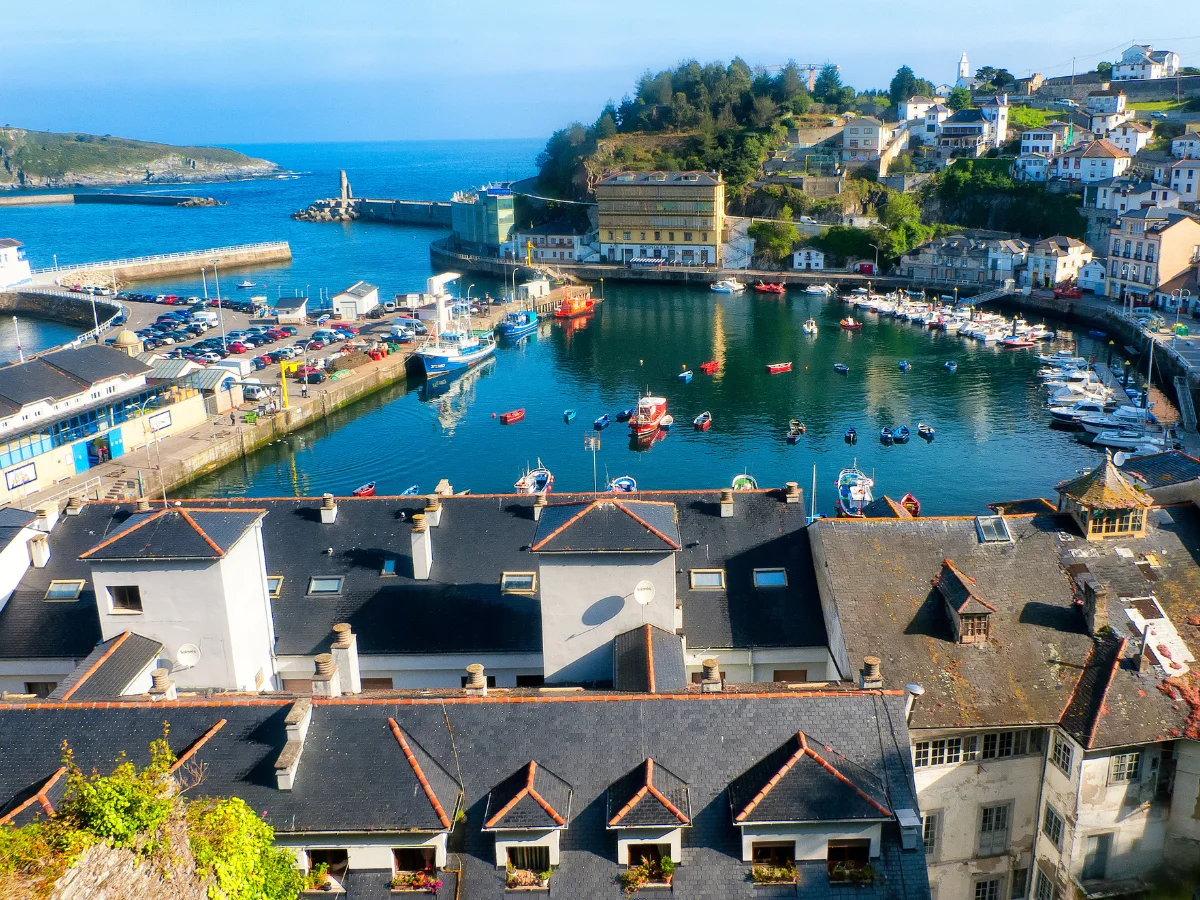Asturias region is a hidden gem in northern Spain
Asturias region is a hidden gem in northern Spain that boasts breathtaking natural beauty. With its rugged mountains, lush green valleys, and pristine coastline along the Bay of Biscay, it’s a paradise for outdoor enthusiasts. Hike the Picos de Europa, sample Asturian cider in charming villages, and savor the region’s delectable cuisine. Including fabada asturiana (bean stew) and seafood. Explore historic Oviedo, with its stunning architecture, and visit coastal towns like Gijón and Luarca for a taste of local culture.








The Asturias region is a hidden gem in northern Spain
Gijón
Gijón, nestled in the heart of Asturias, is a coastal gem waiting to be explored. With its picturesque beaches, vibrant cultural scene, and delicious seafood, it offers a perfect blend of relaxation and excitement. Stroll along San Lorenzo Beach, visit the intriguing Jardín Botánico Atlántico, and indulge in local delicacies at the Cimavilla district’s seafood restaurants. Dive into the city’s rich history at the Evaristo Valle Museum, and don’t miss the International Bagpipe Museum for a taste of Asturian music. Gijón’s unique charm and lively atmosphere make it an ideal destination for a memorable Spanish getaway.
Oviedo
Oviedo, nestled in the stunning Asturias region, is a captivating Spanish city worth exploring. With its historic charm, picturesque plazas, and impressive architecture, it offers a delightful blend of culture and beauty. Wander through the historic old town to admire the Cathedral of San Salvador, visit the intriguing Archaeological Museum of Asturias, and savor Asturian cuisine at local sidrerías. Oviedo’s rich history, vibrant arts scene, and welcoming atmosphere make it an ideal destination for travelers seeking an authentic Spanish experience.
Cudillero
Cudillero, a gem in the Asturias region, is a charming fishing village that beckons travelers with its coastal beauty. Nestled between lush green hills and the shimmering Bay of Biscay, it’s a picturesque destination. Wander its narrow streets adorned with colorful houses, savor fresh seafood at waterfront restaurants, and take in the stunning views from the lighthouse. Cudillero’s authentic charm, friendly locals, and coastal allure make it a perfect spot for those seeking tranquility and natural beauty in Spain.
Luarca
Luarca, a coastal town in Asturias, Spain, is a hidden treasure waiting to be discovered. With its white-washed buildings, charming harbor, and serene beaches, it offers a tranquil escape. Stroll along its picturesque promenade, visit the iconic lighthouse, and explore the historic Old Town. The town’s maritime heritage and natural beauty make it an ideal destination for relaxation. Experience the warmth of the locals and savor fresh seafood at local eateries. Luarca invites travelers to unwind by the sea and immerse themselves in the authentic charm of this coastal haven in Spain.
History of the Asturias region, a hidden gem in northern Spain
Ancient Origins
The history of the Asturias region in Spain dates back to ancient times. It was inhabited by various Celtic people before the Roman conquest in the 1st century BC. The rugged terrain and coastal location made it a strategic stronghold.
The Visigothic Era
After the fall of the Roman Empire, the Visigoths established their rule in the Iberian Peninsula. Asturias became part of the Visigothic Kingdom, experiencing both stability and turmoil under their reign. It retained its distinct cultural identity amidst the evolving political landscape.
The Moors’ Incursion
In 711 AD, the Moors crossed the Strait of Gibraltar and swiftly conquered much of the Iberian Peninsula, including parts of Asturias. However, resistance began to form in the northern regions, eventually leading to the Reconquista.
The Birth of the Kingdom of Asturias
In the 8th century, Asturias emerged as a focal point of Christian resistance against the Moors. Pelayo, a nobleman, led a pivotal victory at the Battle of Covadonga in 722 AD. This triumph marked the beginning of the Reconquista and the foundation of the Kingdom of Asturias.
The Asturian Monarchy
Under the Asturian monarchy, the region experienced a cultural and architectural renaissance. Asturian pre-Romanesque art flourished, leaving behind iconic landmarks such as the Church of Santa María del Naranco and the Basilica of San Julián de los Prados.
The Camino de Santiago
During the Middle Ages, Asturias played a crucial role in the pilgrimage route to Santiago de Compostela. The Camino Primitivo, the original Way of St. James, traversed through Asturian territory, attracting pilgrims from across Europe and fostering cultural exchange.
Medieval Conflicts
Asturias faced intermittent conflicts with neighboring kingdoms such as León and Castile during the Middle Ages. These power struggles often resulted in shifting borders and alliances, shaping the region’s political landscape for centuries to come.
Modern Era and Beyond
In the modern era, Asturias experienced industrialization and economic growth, particularly in mining and metallurgy. However, it also grappled with social upheaval and political challenges, including the Spanish Civil War and the subsequent dictatorship of Francisco Franco.
Contemporary Asturias
Today, Asturias is known for its stunning natural beauty, rich cultural heritage, and culinary delights. From the rugged peaks of the Picos de Europa to the picturesque coastal villages, the region continues to captivate visitors with its unique blend of history and charm.
